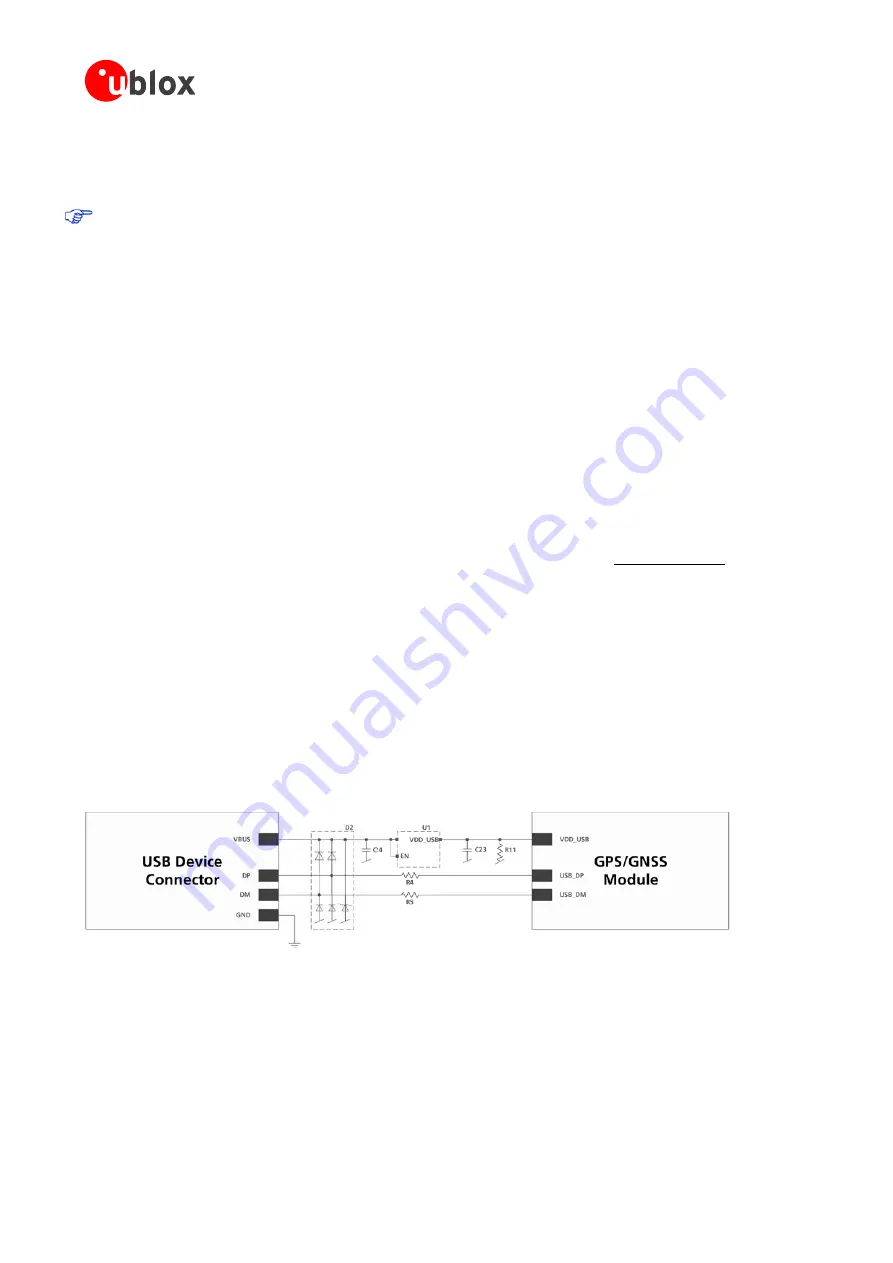
MAX-7 / NEO-7 / LEA-7 - Hardware Integration Manual
GPS.G7-HW-11006-1
Hardware description
Page 11 of 55
2.5.6
V_ANT: Antenna supply (NEO-7/LEA-7)
The
V_ANT
pin is available to provide antenna bias voltage to supply an optional external active antenna. For
more information, see section 3.4.3.2.
If not used, connect the
V_ANT
pin to GND.
2.6
Interfaces
2.6.1
UART
u-blox 7 positioning modules include a Universal Asynchronous Receiver Transmitter (UART) serial interface
RxD/TxD
supporting configurable baud rates. The baud rates supported are specified in the
u-blox 7 Receiver
Description Including Protocol Specification
The signal output and input levels are 0 V to VCC for NEO-7 and LEA-7 modules, and 0 V to VCC_IO for MAX-7
modules. An interface based on RS232 standard levels (+/- 12 V) can be implemented using level shifters such as
Maxim MAX3232. Hardware handshake signals and synchronous operation are not supported.
2.6.2
USB
A USB version 2.0 FS (Full Speed, 12 Mb/s) compatible interface is available for communication as an alternative
to the UART. The
USB_DP
integrates a pull-up resistor to signal a full-speed device to the host. The
VDD_USB
pin supplies the USB interface.
u-blox provides Microsoft® certified USB drivers for Windows XP, Windows Vista, and Windows 7 operating
systems (also Windows 8 compatible). These drivers are available at our website at www.u-blox.com
2.6.2.1
USB external components
The USB interface requires some external components to implement the physical characteristics required by the
USB 2.0 specification. These external components are shown in Figure 3 and listed in Table 2. To comply with
USB specifications, VBUS must be connected through an LDO (U1) to pin
VDD_USB
on the module.
If the USB device is
self-powered
, the power supply (VCC) can be turned off and the digital block is not
powered. In this case, since VBUS is still available, the USB host would still receive the signal indicating that the
device is present and ready to communicate. This should be avoided by disabling the LDO (U1) using the enable
signal (EN) of the VCC-LDO or the output of a voltage supervisor. Depending on the characteristics of the LDO
(U1) it is recommended to add a pull-down resistor (R11) at its output to ensure VDD_USB is not floating if the
LDO (U1) is disabled or the USB cable is not connected i.e. VBUS is not supplied.
If the device is
bus-powered
, LDO (U1) does not need an enable control.
Figure 3: USB Interface










































